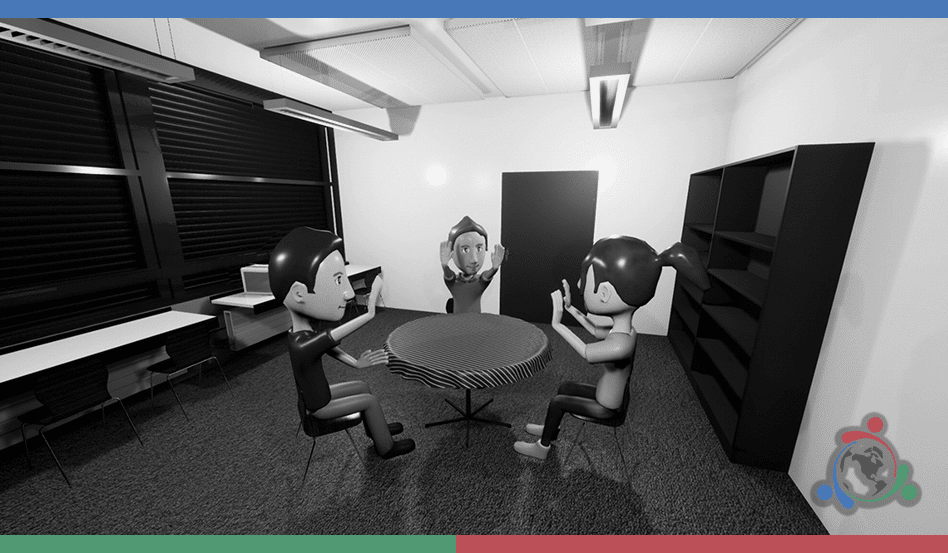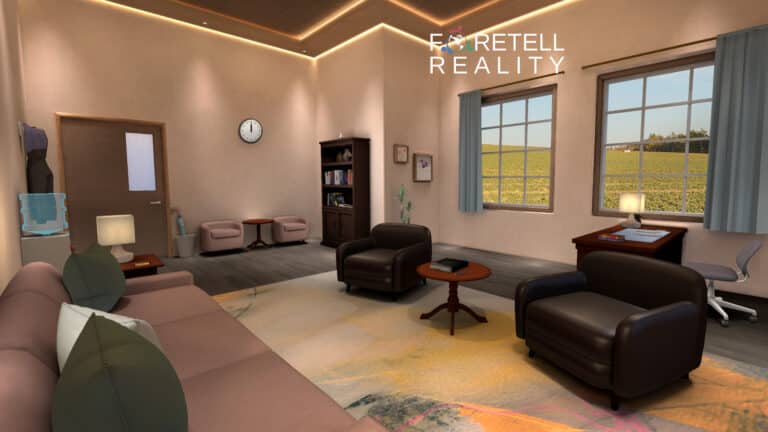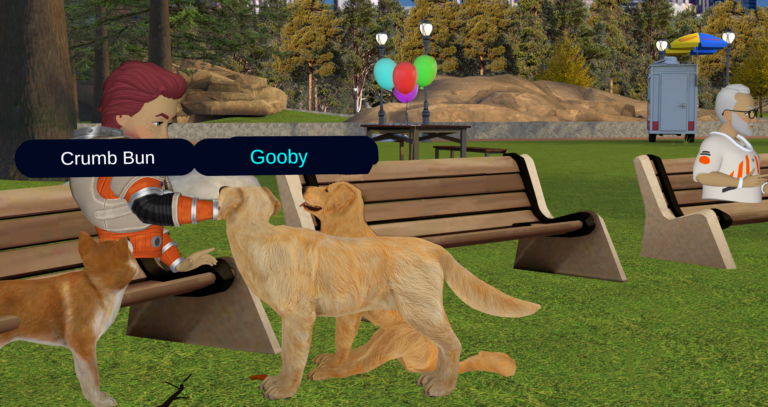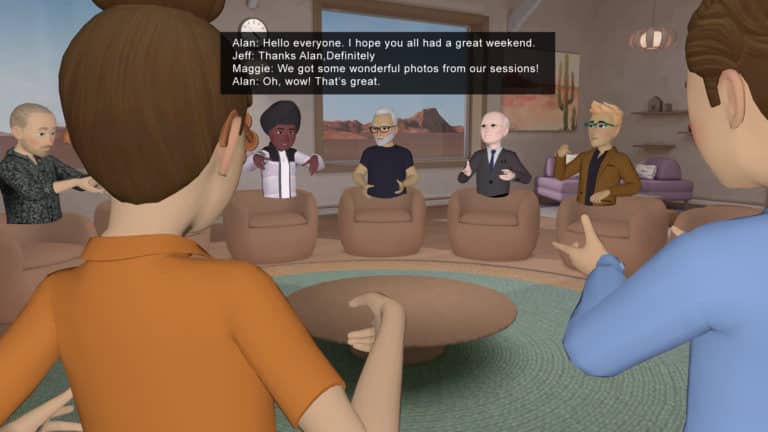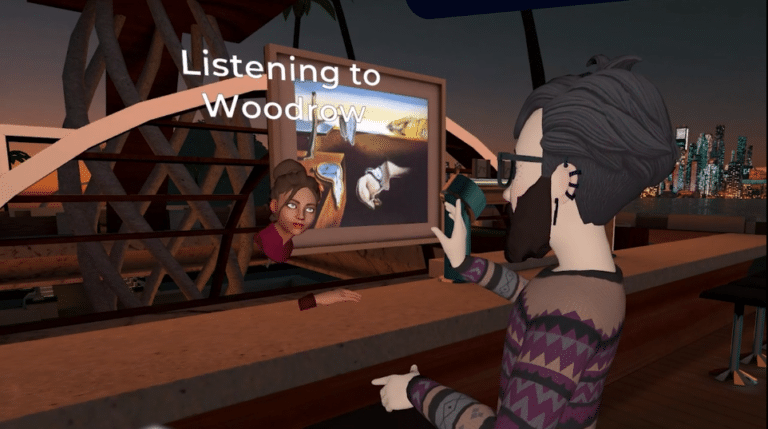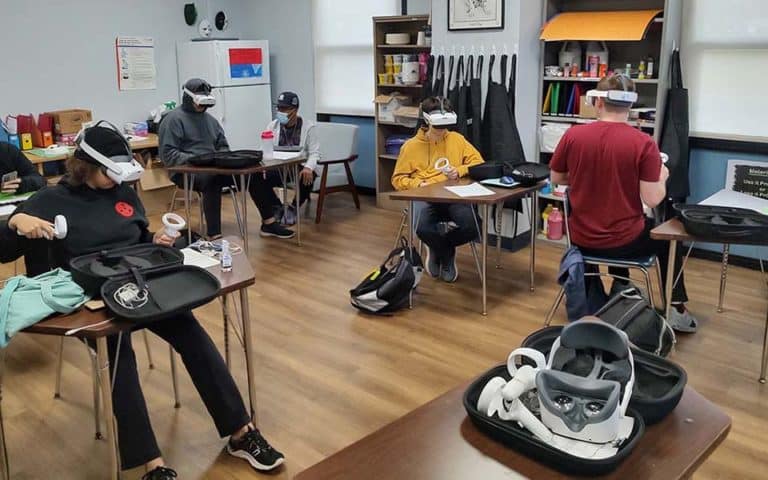Zoom fatigue is real and face-to-face meetings are still rare. Can Virtual Reality (VR) offer a viable alternative to both?
A recent study set out to answer the question by comparing the effectiveness of group collaboration through multi-user immersive virtual reality (IVR), face-to-face (FTF) meetings, and video conferencing (VR).
The study included a final sample size of 174 participants from secondary schools, a vocational college, and a university. Groups of three participants were assigned the task of deciding on the most favorable candidate for a position out of four choices.
In the FtF condition, participants were seated together around a circular table and their discussion was captured by a webcam. For the VC condition, group members were displayed on a 19” screen and used headphones. For the IVR condition, participants sat at a virtual table, using avatars to mask their true identities. Group communication and collaboration was then recorded, along with observations in social pressure and cognitive load.
The following are some of the key findings of the study:
- IVR provided comparable multisensory inputs that mimicked face-to-face interactions. Participants demonstrated similar communication patterns in both IVR and face-to-face environments
- Higher degrees of virtuality and engagement led to pooling of otherwise unshared information. This pooling was most likely due to the degree of spatial interactivity and social presence provided through VR environments.
- No evidence was found for differences in extraneous cognitive load in IVR. Participants were not overwhelmed with remembering discussed information in virtual reality environments.
The study concluded that “Multi-user IVR can help bridge the gap between the main advantages of IVR (simulation and manipulation of immersive three-dimensional objects) and the growing demand for effective collaboration of spatially distributed teams. This creates new opportunities for remote work that rely on spatial interactivity within a virtual environment.”
Even after the pandemic subsides, it is estimated that at least 16% of workers will continue to permanently work remotely and about 80% of employers plan to allow remote work at least some of the time after things return to normal.
Foretell Reality is a social Virtual Reality (VR) platform that enables authentic human interactions in immersive environments designed to promote communication, collaboration, and learning.


